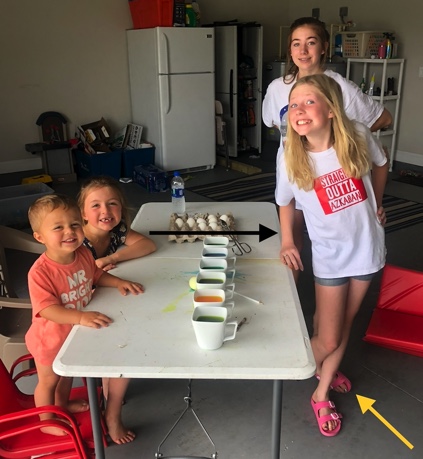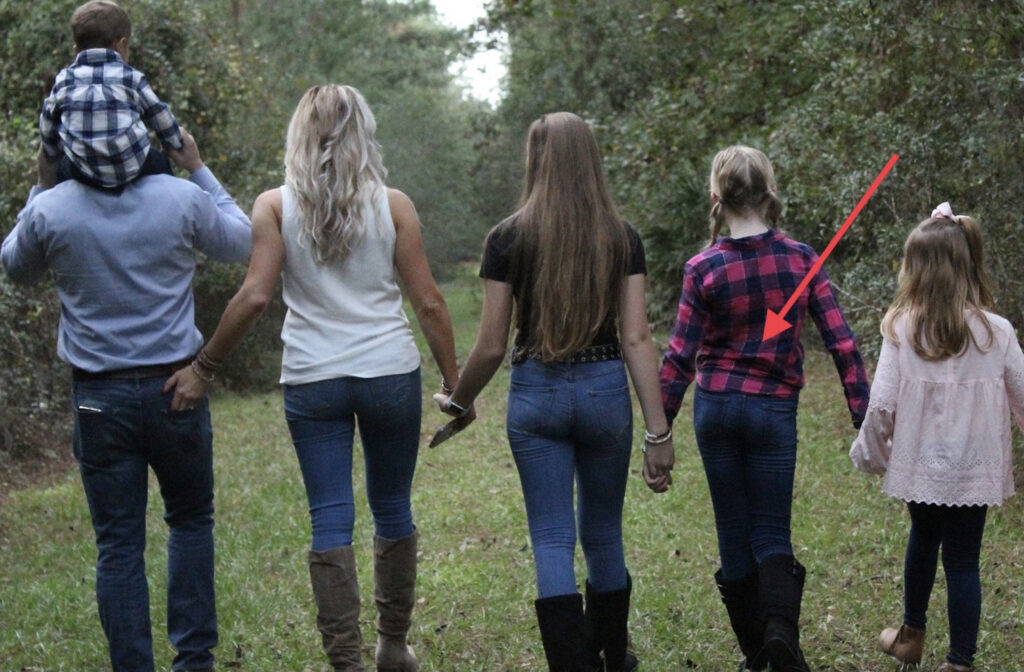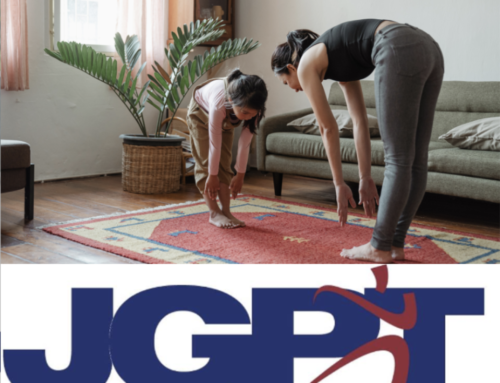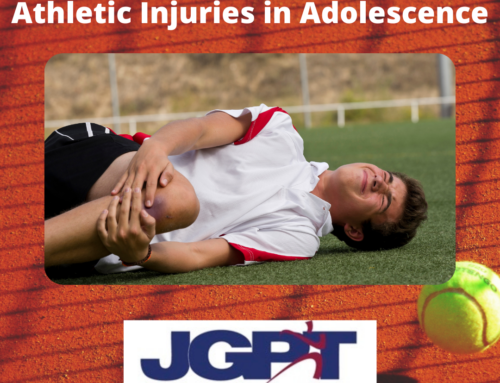Patient Experience with Neuromuscular Re-Education
 My daughter started limping when she was 11 years old. During COVID lockdown she had a huge growth spurt, and her foot grew about two full shoe sizes. She spent her days running around outside with the neighborhood kids and spent hours jumping on the trampoline and doing flips and jumps in the front yard. When I noticed the change in her gait, I assumed she had slightly pulled a muscle and was probably a little clumsy with her quickly growing feet. She continually said that it did not hurt. Over time, the limp did not go away, and she would always stand without putting weight on her foot. Notice how she is standing in the photo. When friends and family started to notice, I finally took her to the doctor.
My daughter started limping when she was 11 years old. During COVID lockdown she had a huge growth spurt, and her foot grew about two full shoe sizes. She spent her days running around outside with the neighborhood kids and spent hours jumping on the trampoline and doing flips and jumps in the front yard. When I noticed the change in her gait, I assumed she had slightly pulled a muscle and was probably a little clumsy with her quickly growing feet. She continually said that it did not hurt. Over time, the limp did not go away, and she would always stand without putting weight on her foot. Notice how she is standing in the photo. When friends and family started to notice, I finally took her to the doctor.
This started a long process of multiple doctor visits, referrals to new doctors, X-Rays, and confusion. Finally, I received a referral to an orthopedic foot doctor. He was our savior! He diagnosed her on the spot by pressing on one area of her foot that quite literally made her shriek in pain. After an MRI, it was confirmed that she would need foot surgery in her right foot for a severe case of Tarsal Coalition.
Tarsal Coalition Diagnosis
As defined by the Children’s Hospital of Philadelphia, “Tarsal coalition is an abnormal connection  between two or more bones in the back of the foot. The condition can cause pain, stiffness and affect daily activities. The bones most often involved in tarsal coalition are the calcaneus (heel bone), the talus, which connects the ankle to the foot, and navicular bones, which form the top of the foot at the base of the ankle. When two or more of these bones abnormally grow or fuse together — connected by bone, cartilage or fibrous tissue — a tarsal coalition is formed. Tarsal coalition makes the back of the foot less flexible and interferes with the normal function of the foot. It can cause limping, muscle spasms and frequent ankle sprains. Tarsal coalition can affect one or both feet.”
between two or more bones in the back of the foot. The condition can cause pain, stiffness and affect daily activities. The bones most often involved in tarsal coalition are the calcaneus (heel bone), the talus, which connects the ankle to the foot, and navicular bones, which form the top of the foot at the base of the ankle. When two or more of these bones abnormally grow or fuse together — connected by bone, cartilage or fibrous tissue — a tarsal coalition is formed. Tarsal coalition makes the back of the foot less flexible and interferes with the normal function of the foot. It can cause limping, muscle spasms and frequent ankle sprains. Tarsal coalition can affect one or both feet.”
My first question was, WHY ON EARTH she had been telling me she wasn’t in pain for so long? The doctor explained that her brain automatically made her body avoid pain. Your brain controls your nerves and muscles, which work together to produce movement. While she probably wasn’t being completely honest about the lack of pain, she was avoiding it without even realizing it.
 Fortunately, her surgery was successful. After being in a big boot for weeks, and a round of physical therapy, she slowly started to heal. Unfortunately, the story doesn’t end there. Just when I thought things were over and healing boot came off, I quickly noticed that her limp had not stopped. Again, she swore there was no pain, but her limp was even worse than before surgery and she stood and walked bent to the side. Notice the way she is standing in the photo to the left. That became her “normal” way of walking and standing.
Fortunately, her surgery was successful. After being in a big boot for weeks, and a round of physical therapy, she slowly started to heal. Unfortunately, the story doesn’t end there. Just when I thought things were over and healing boot came off, I quickly noticed that her limp had not stopped. Again, she swore there was no pain, but her limp was even worse than before surgery and she stood and walked bent to the side. Notice the way she is standing in the photo to the left. That became her “normal” way of walking and standing.
After getting another MRI which showed a perfectly healed foot, her orthopedic foot surgeon once again knew exactly what she needed. Physical Therapy for Neuromuscular Re-Education. You can imagine the look on my face…. HUH??? What is that?
Physical Therapy for Neuromuscular Re-Education
Applied Physical Medicine defines this as the following: “Neuromuscular re-education is a technique used by physical therapists to restore normal body movement patterns. Your nerves and muscles work together to produce movement. Nerves send signals between your muscles and your brain about where, when and how fast to move. Over time, muscle movement patterns are learned and stored in your memory.”
Her physical therapy consisted of exercises designed to develop normal movements in her hips, legs, waist, and feet. Also, she had to relearn balance and control of her core muscles. Because she had been walking with a limp for so long, her brain and muscles needed to be re-trained to function properly. This sounds like a simple fix, but our brains are powerful, and they control every motion of the body. In simple words, it was like forcing her brain to realize that normal motions would not cause pain. After a couple months in physical therapy, and over a year of dealing with this issue, she finally could walk normal again. Today she is back to her active self, physically fit, and happy.
The experts at John Goetze Physical Therapy are skilled in Neuromuscular Re-Education Therapy. If you recently had a surgery, are recovering from an injury or trauma, or have noticed a limp or off-balance gait, don’t hesitate to book your appointment at JGPT. This mom’s experience could have been much worse had the orthopedic surgeon not referred her to go to physical therapy to re-train her brain and muscles. The therapist at JGPT do everything they can to make sure every patient returns to perfect physical health and a happy life!



![Tennis Elbow [Lateral Epicondylitis]](https://johngoetzephysicaltherapy.com/wp-content/uploads/2022/01/DA11E9C8-5955-499B-98D2-C75AC277B74A-500x383.png)

![Physical Therapy for Headaches [Migraines]](https://johngoetzephysicaltherapy.com/wp-content/uploads/2021/11/B668156A-47EA-4DB1-B9A5-14C75E323EA7-500x383.png)

An intriguing discussion is worth comment. I do think that you should write more on this topic, it might not be a taboo subject but typically folks dont discuss these issues. To the next! All the best!!
Saved as a favorite, I really like your blog!